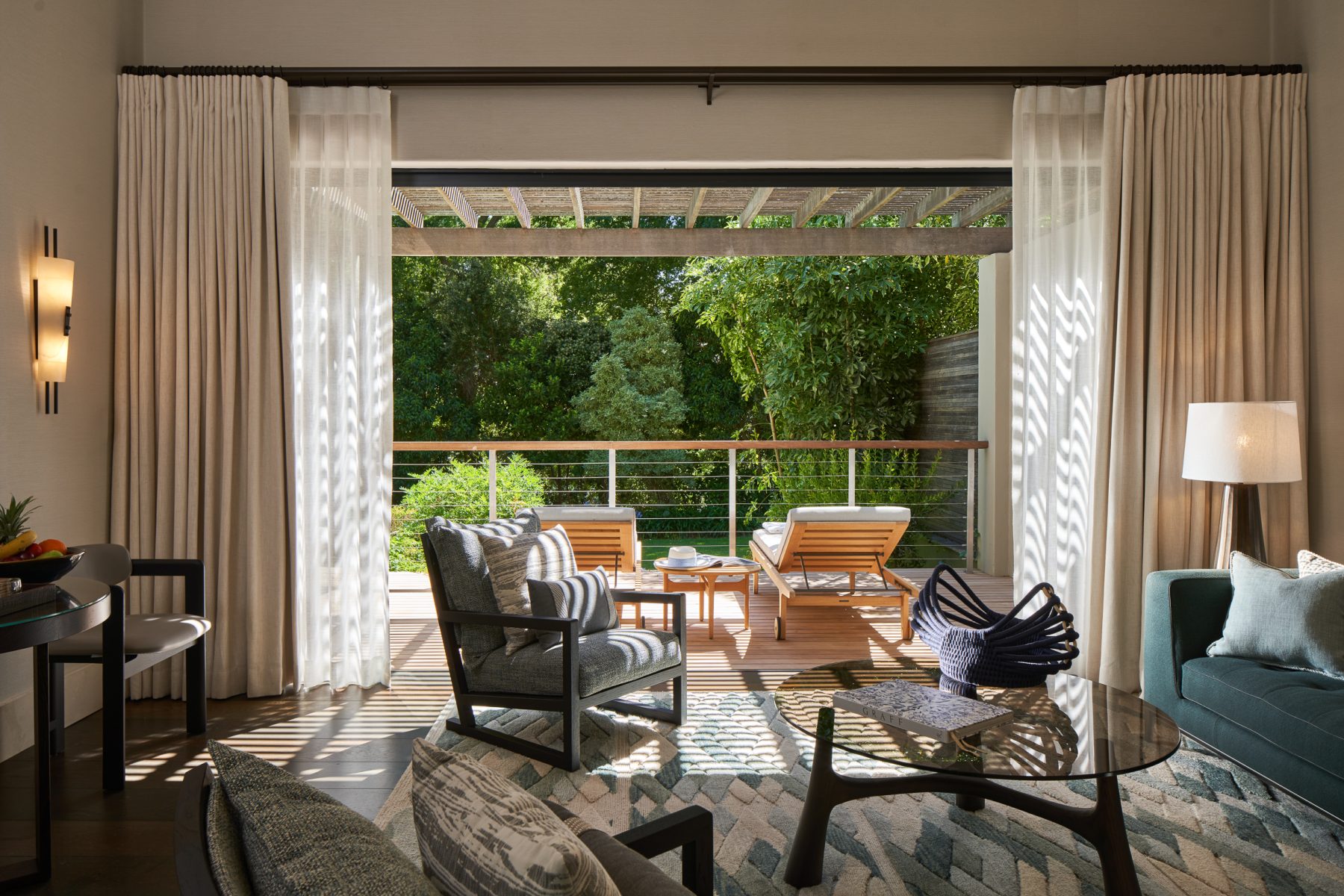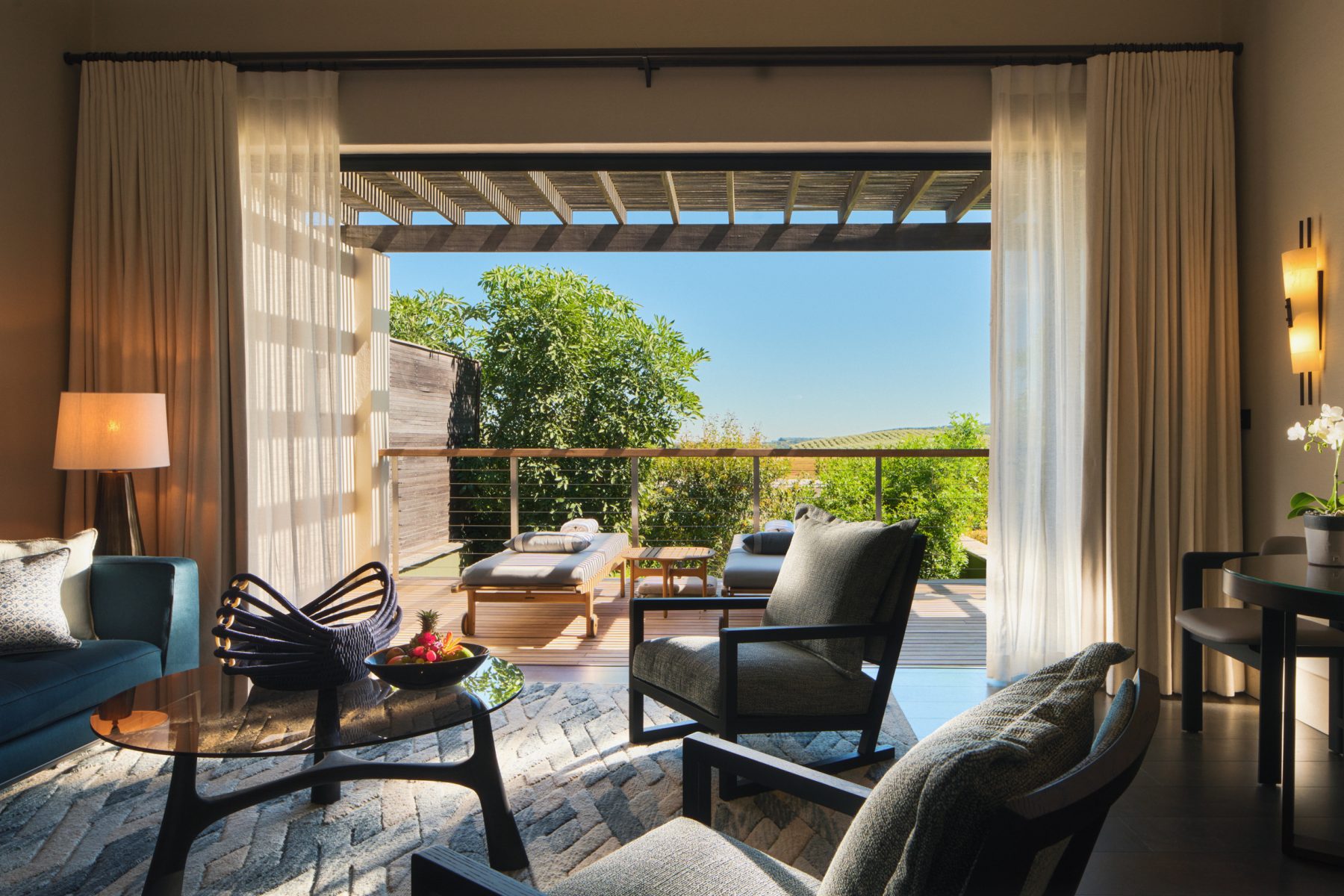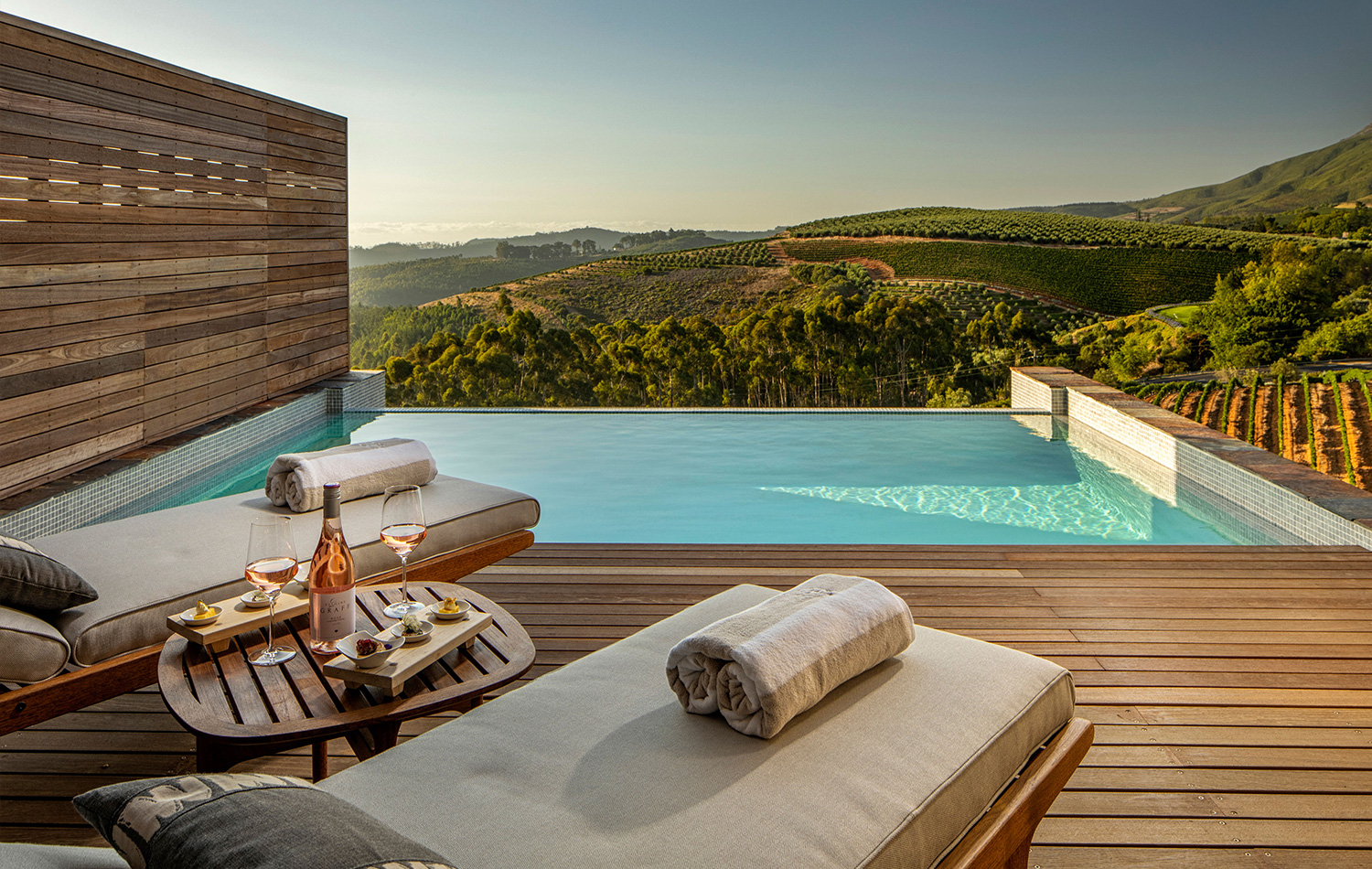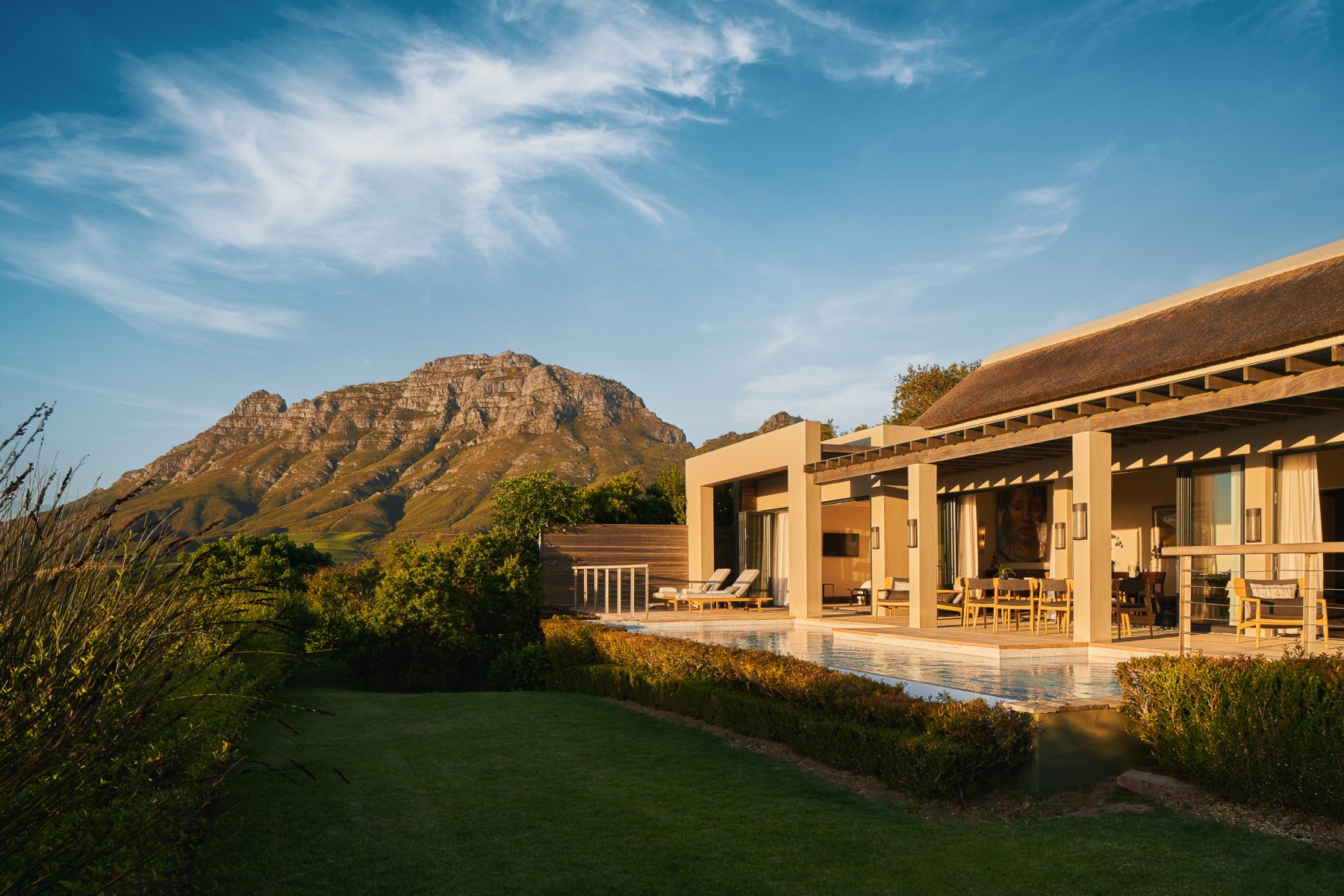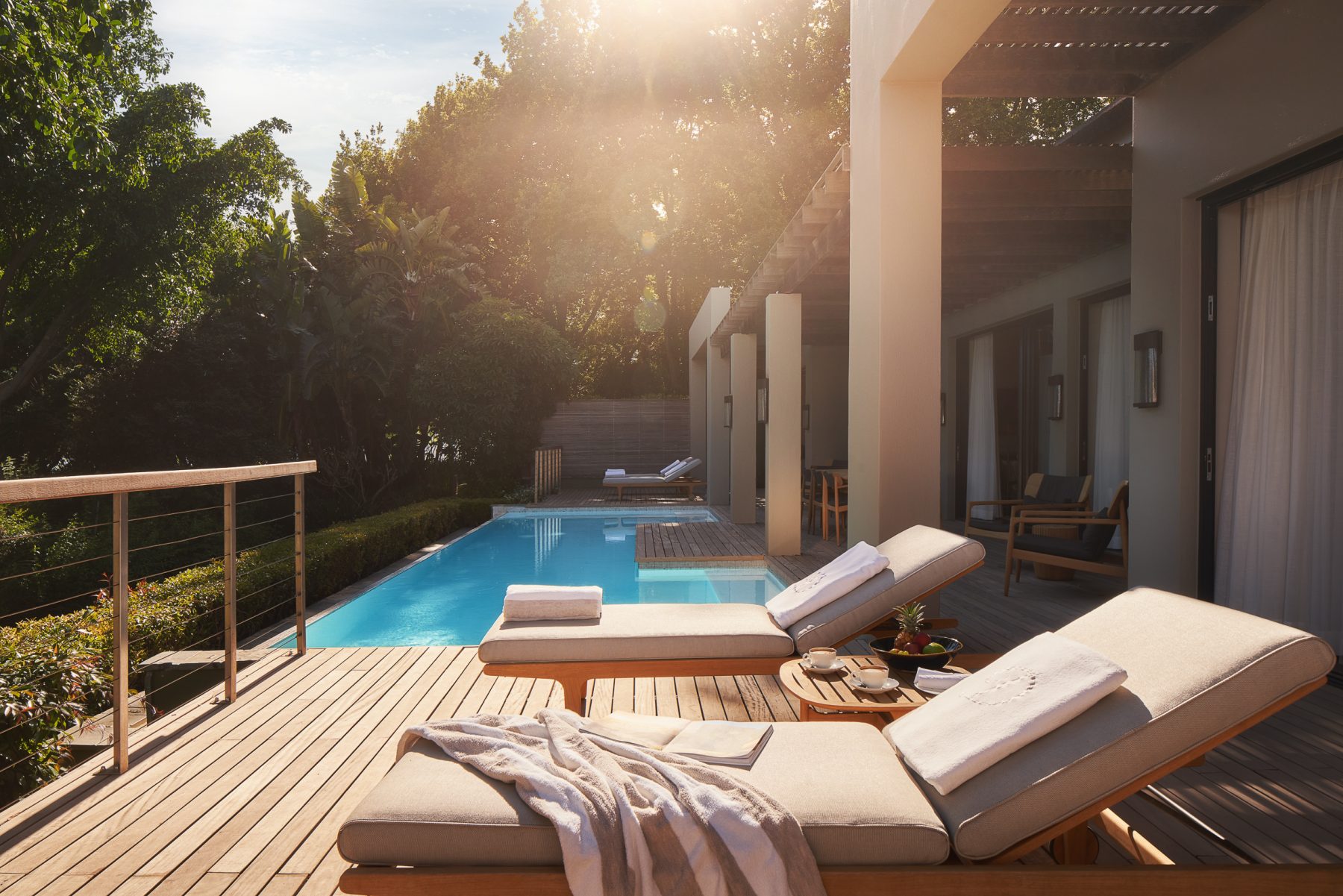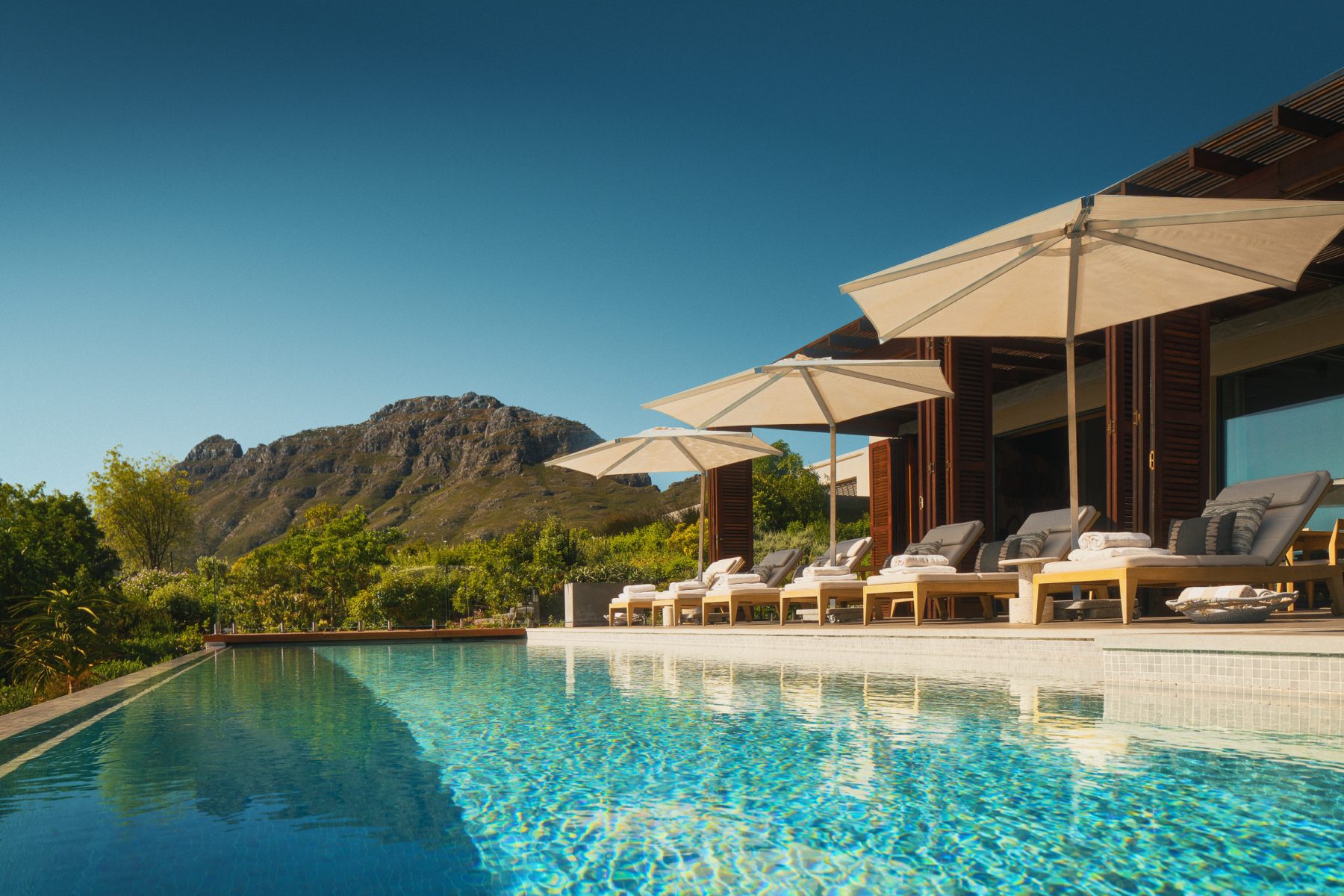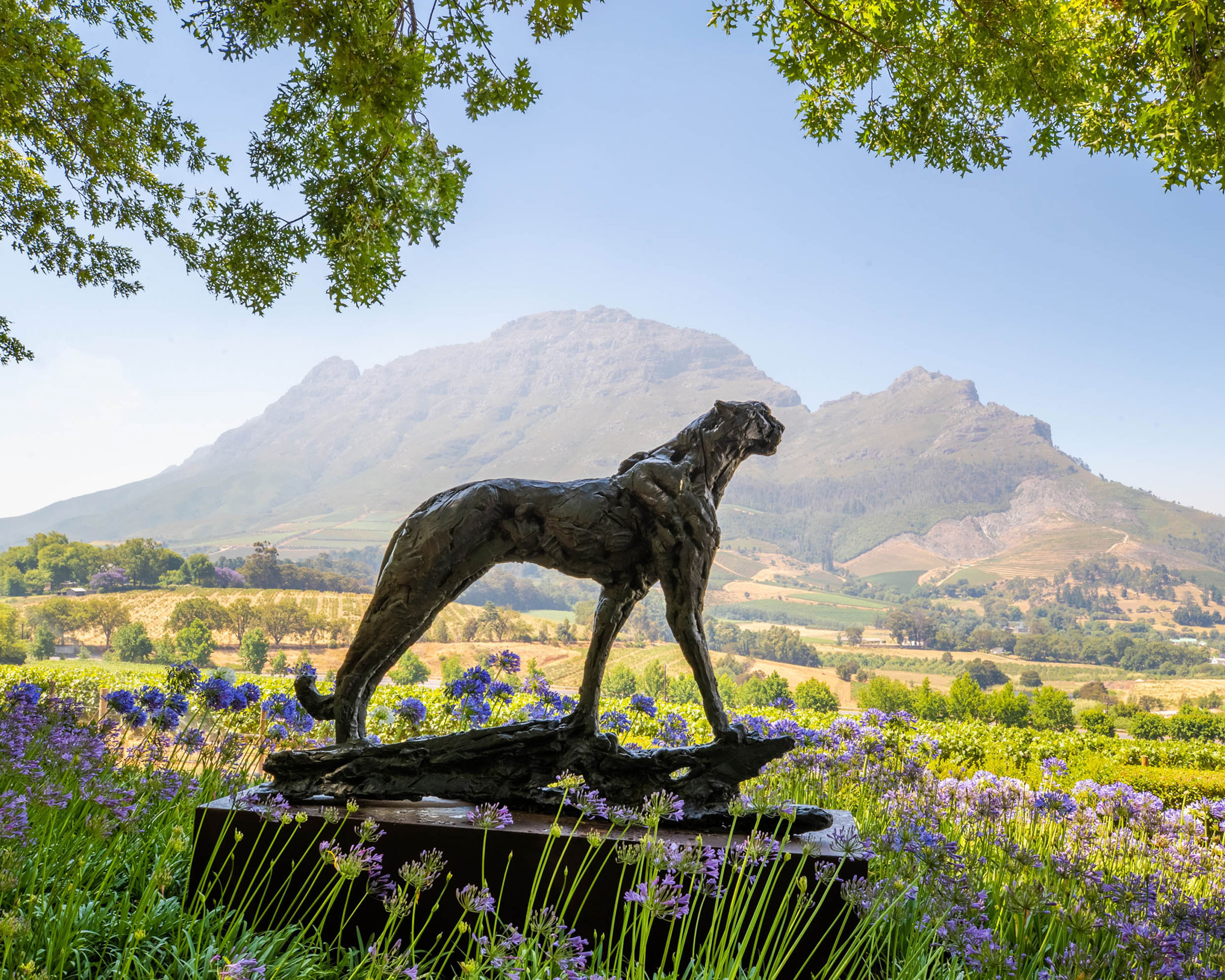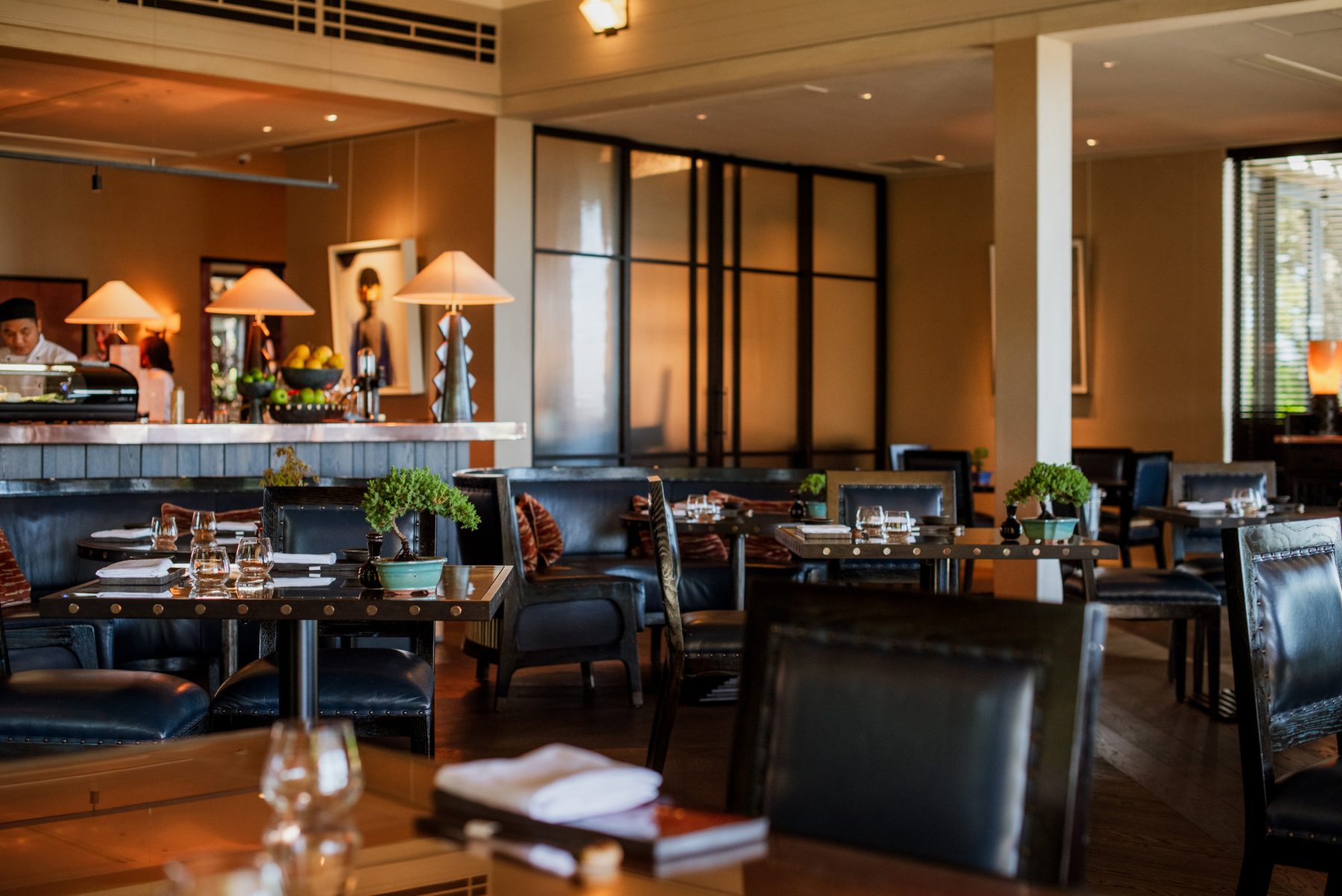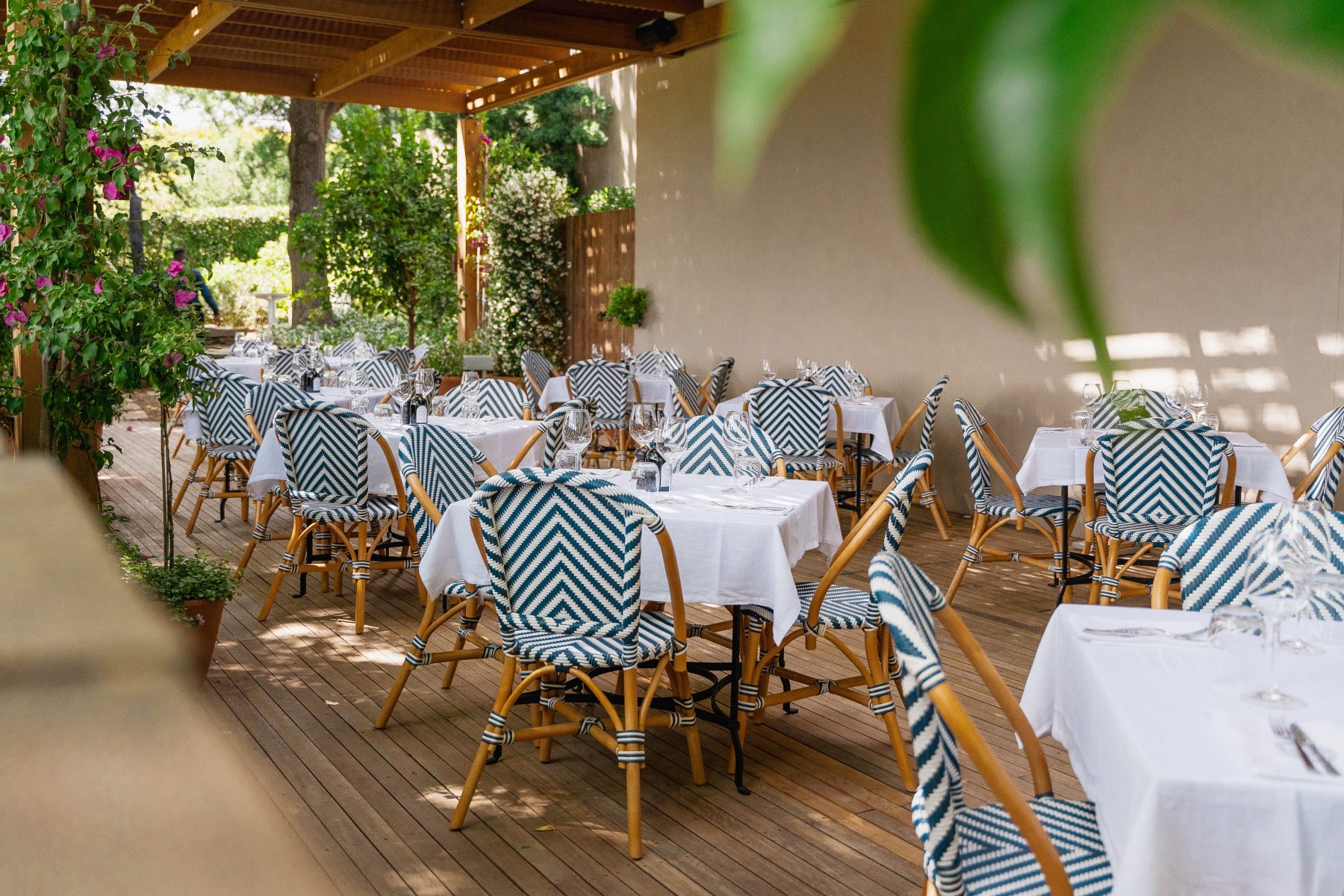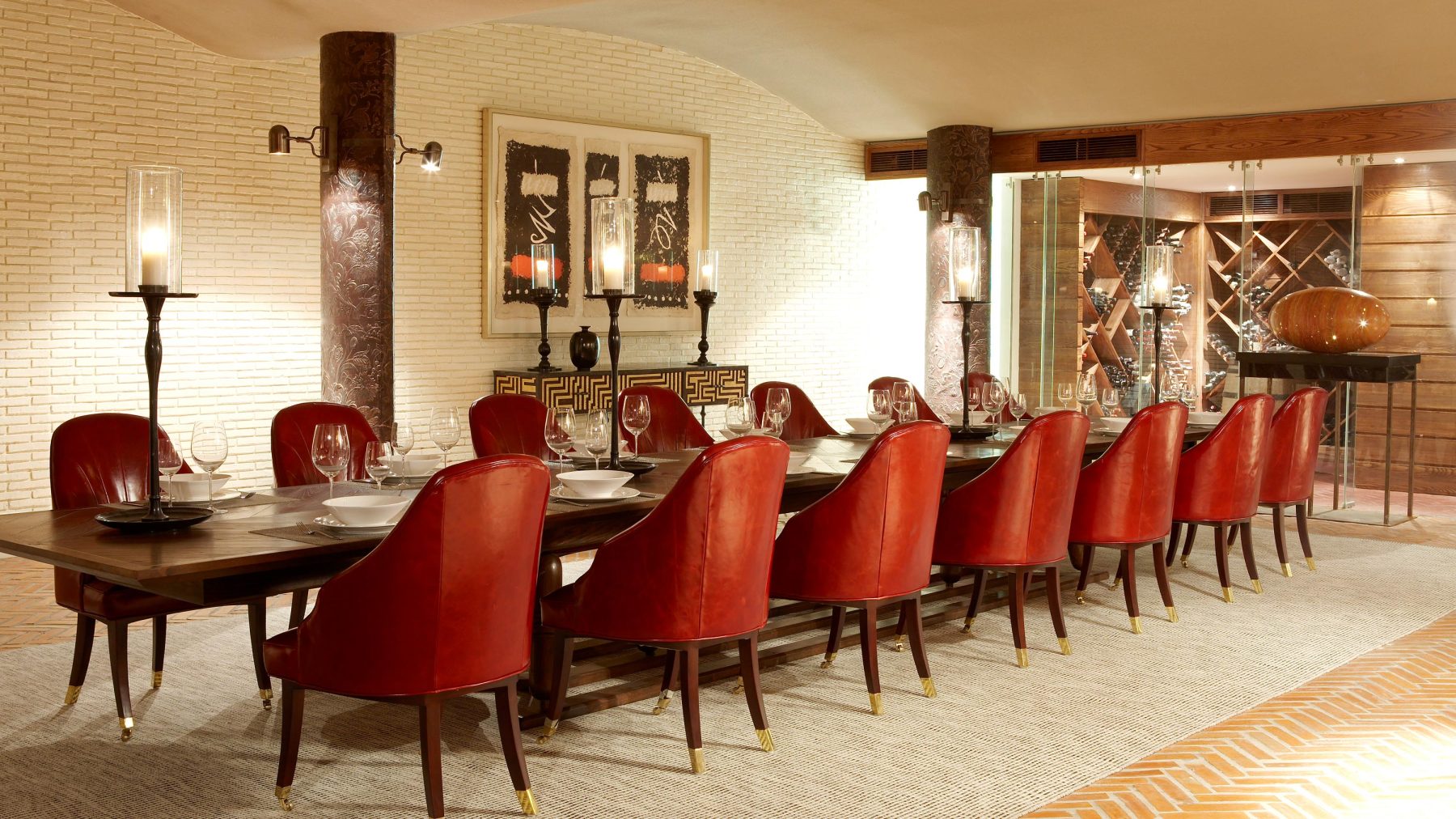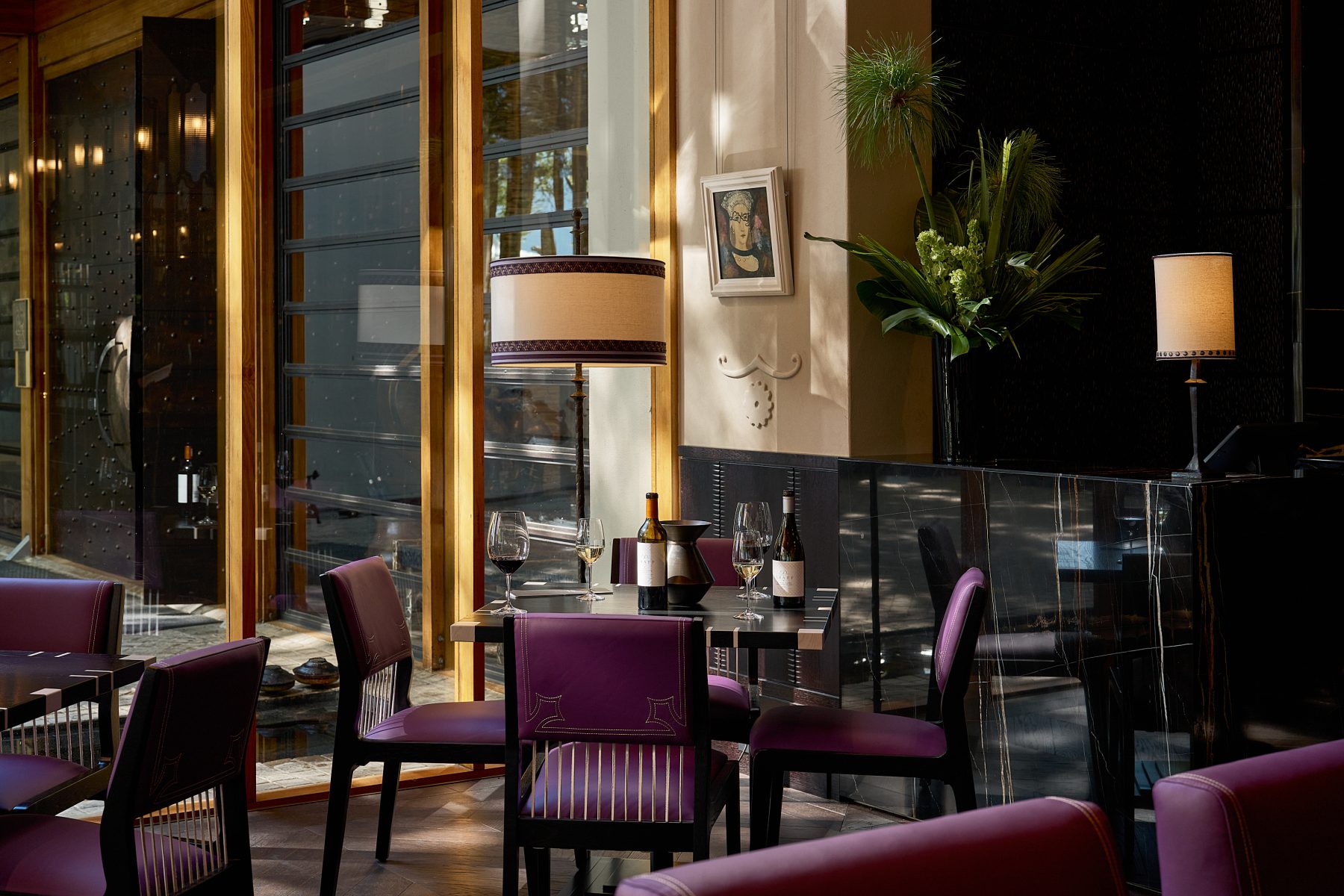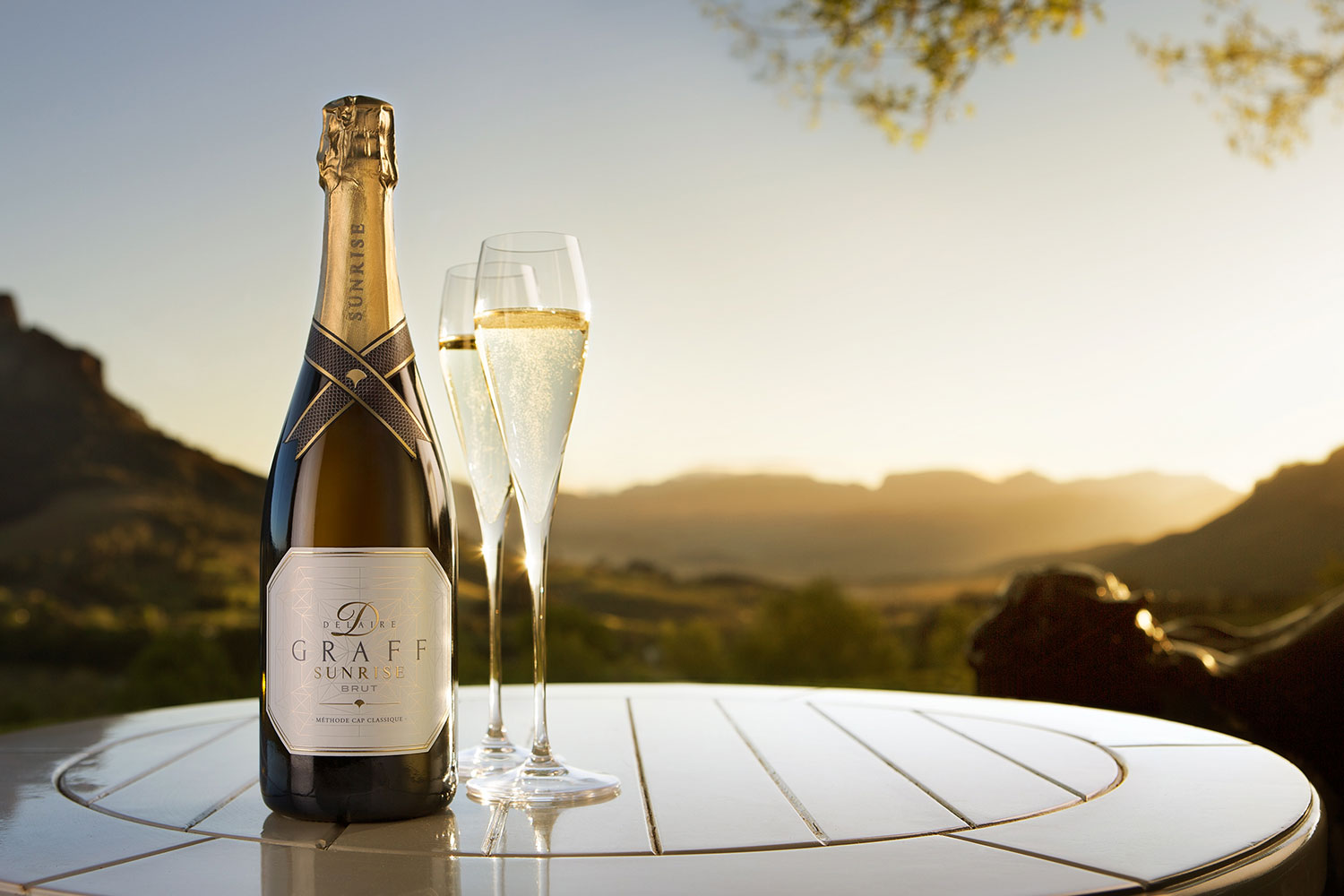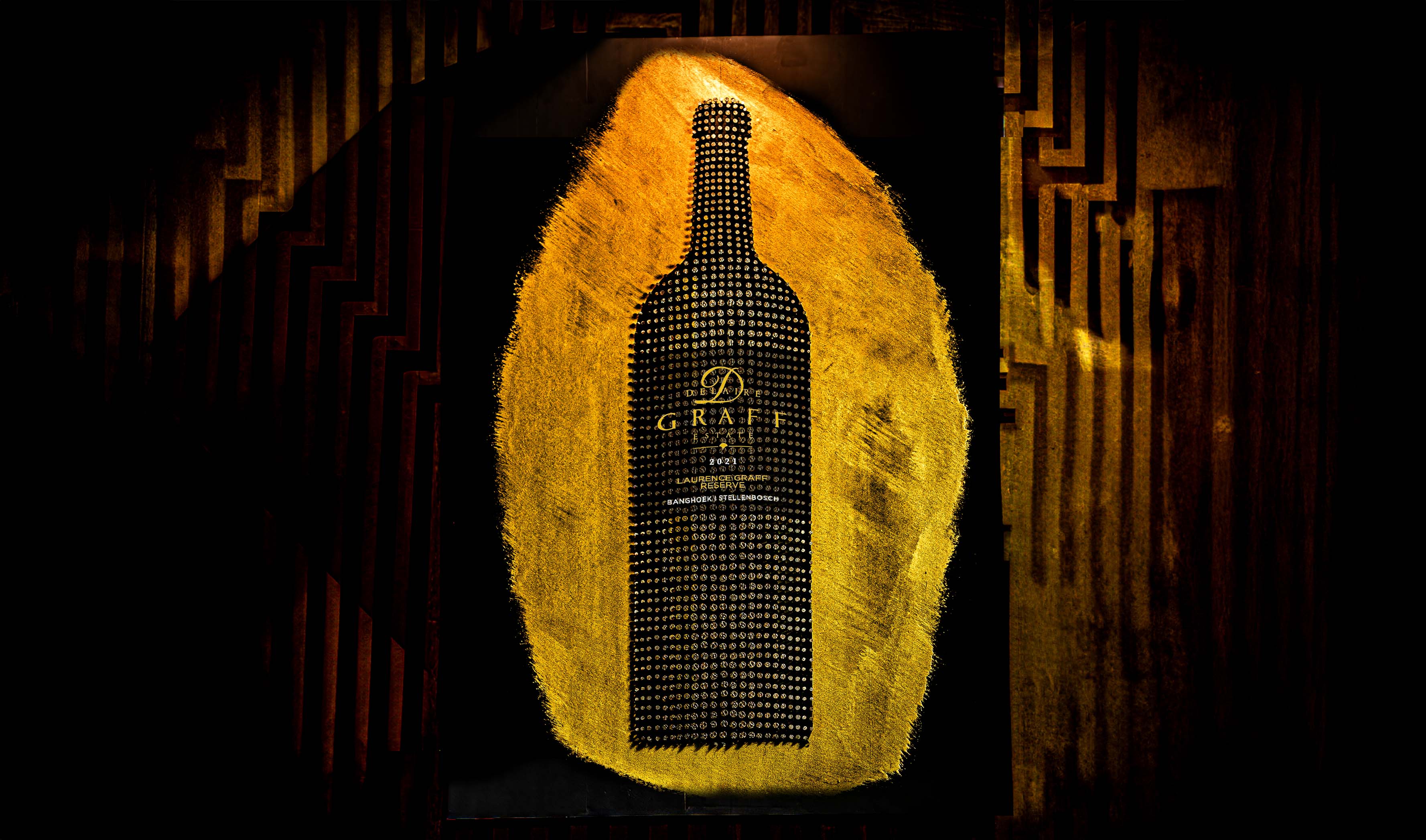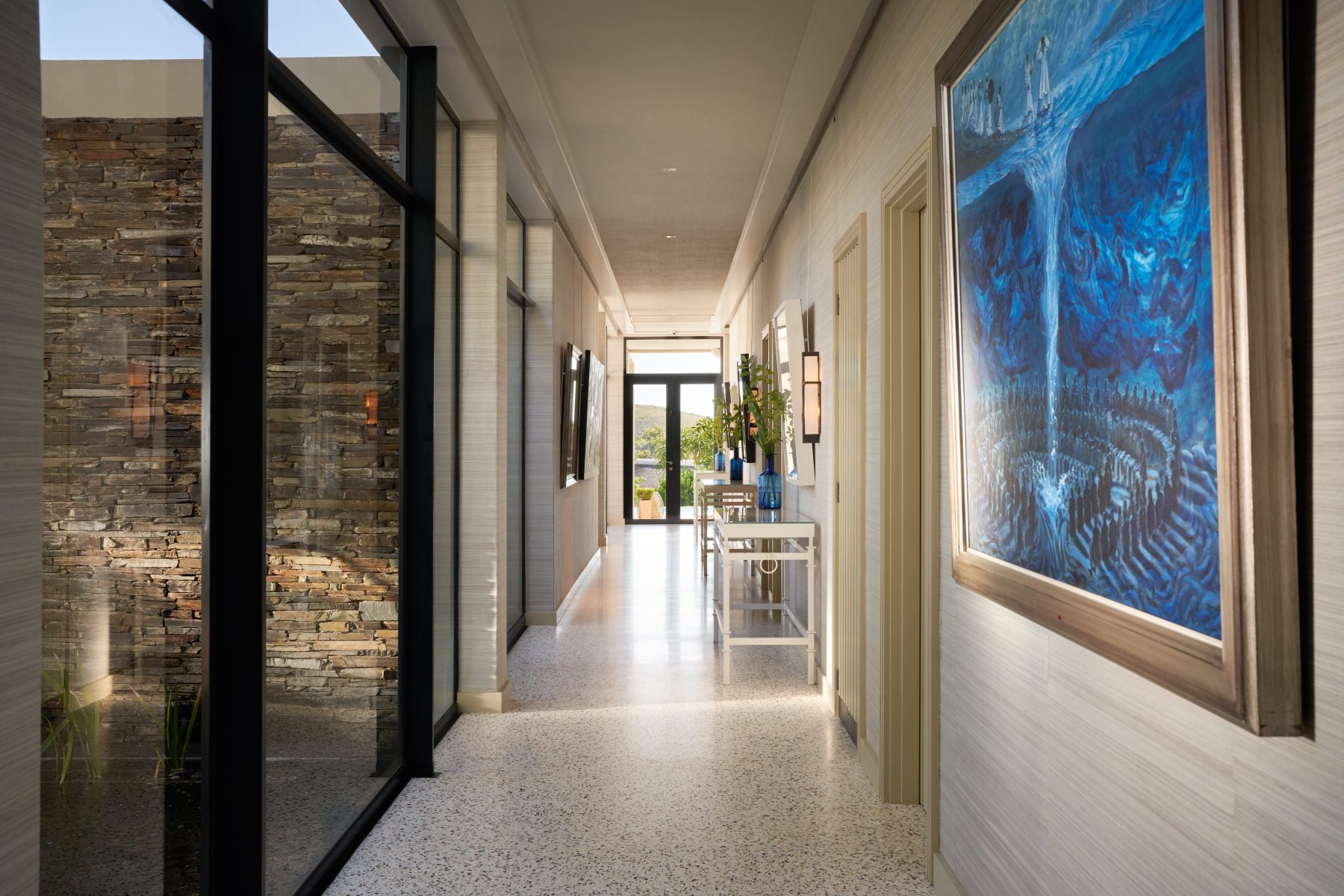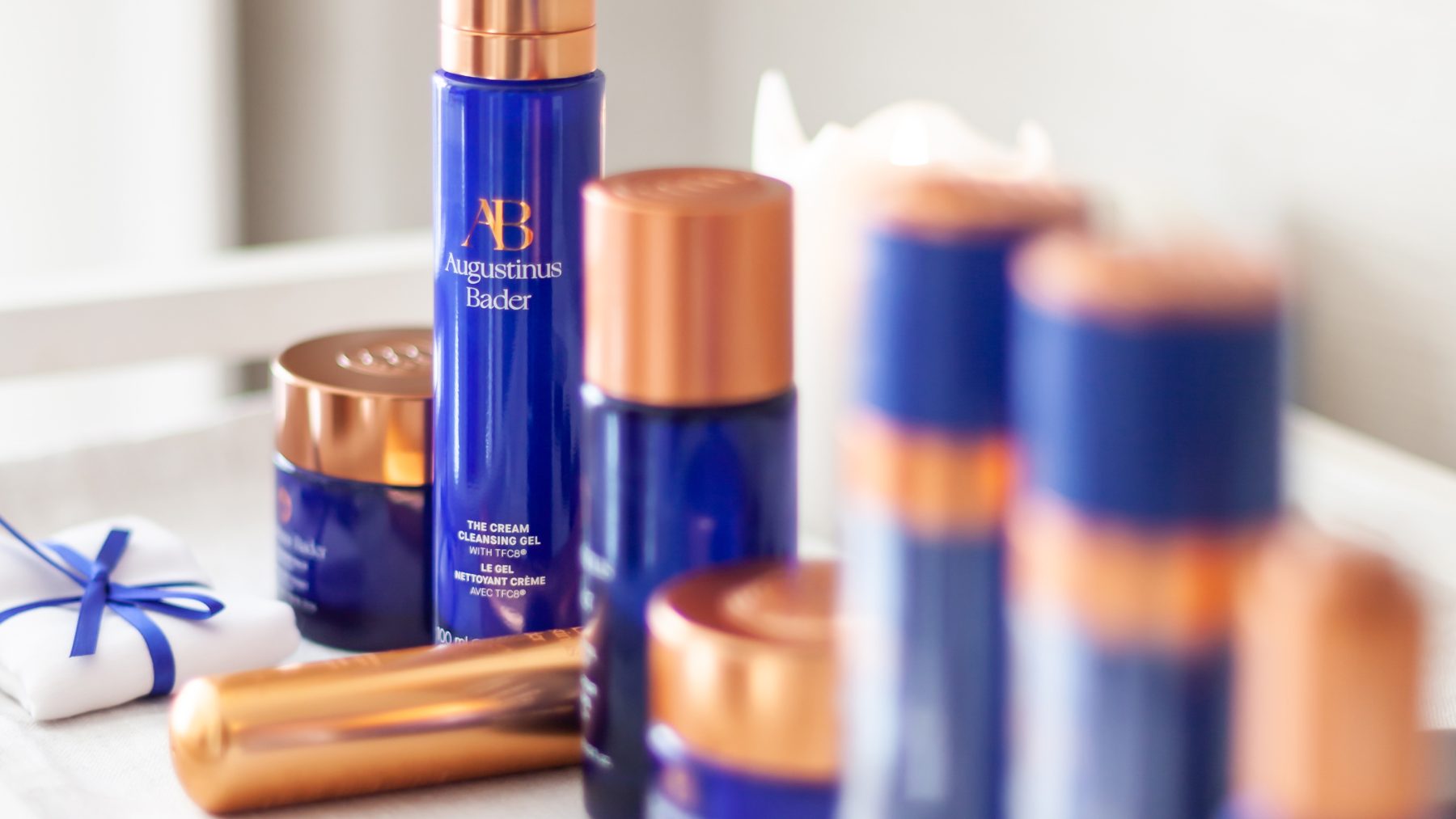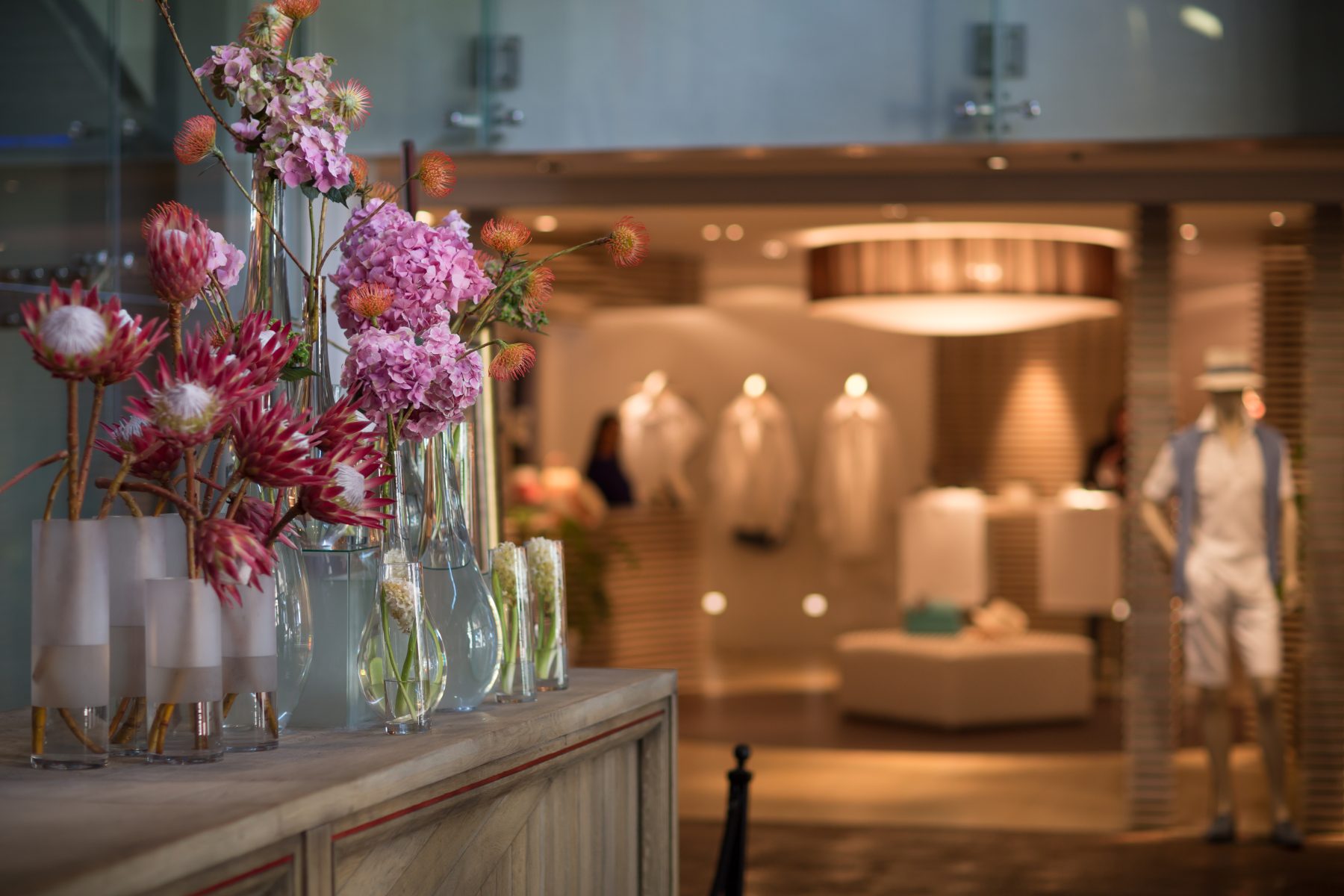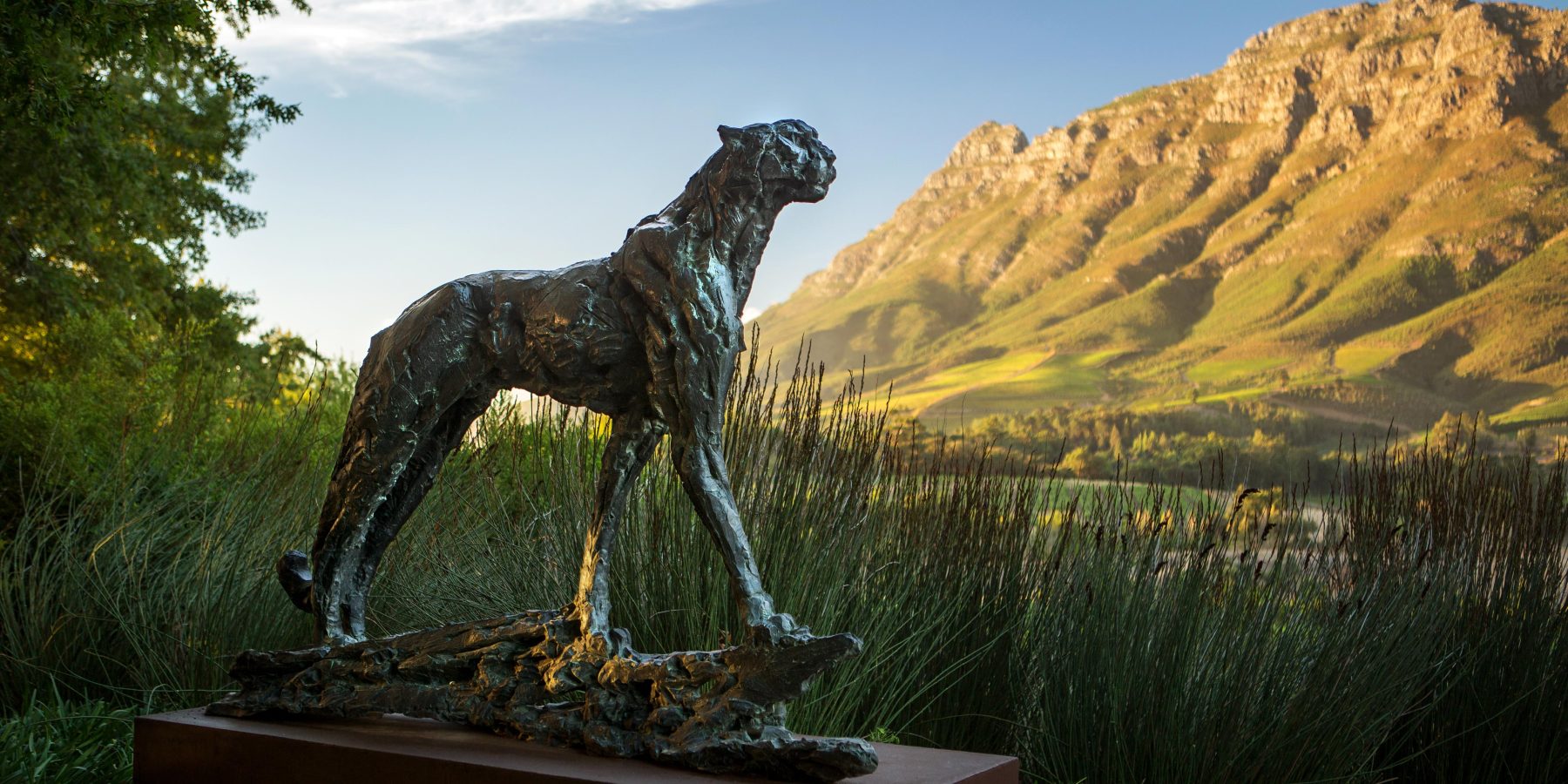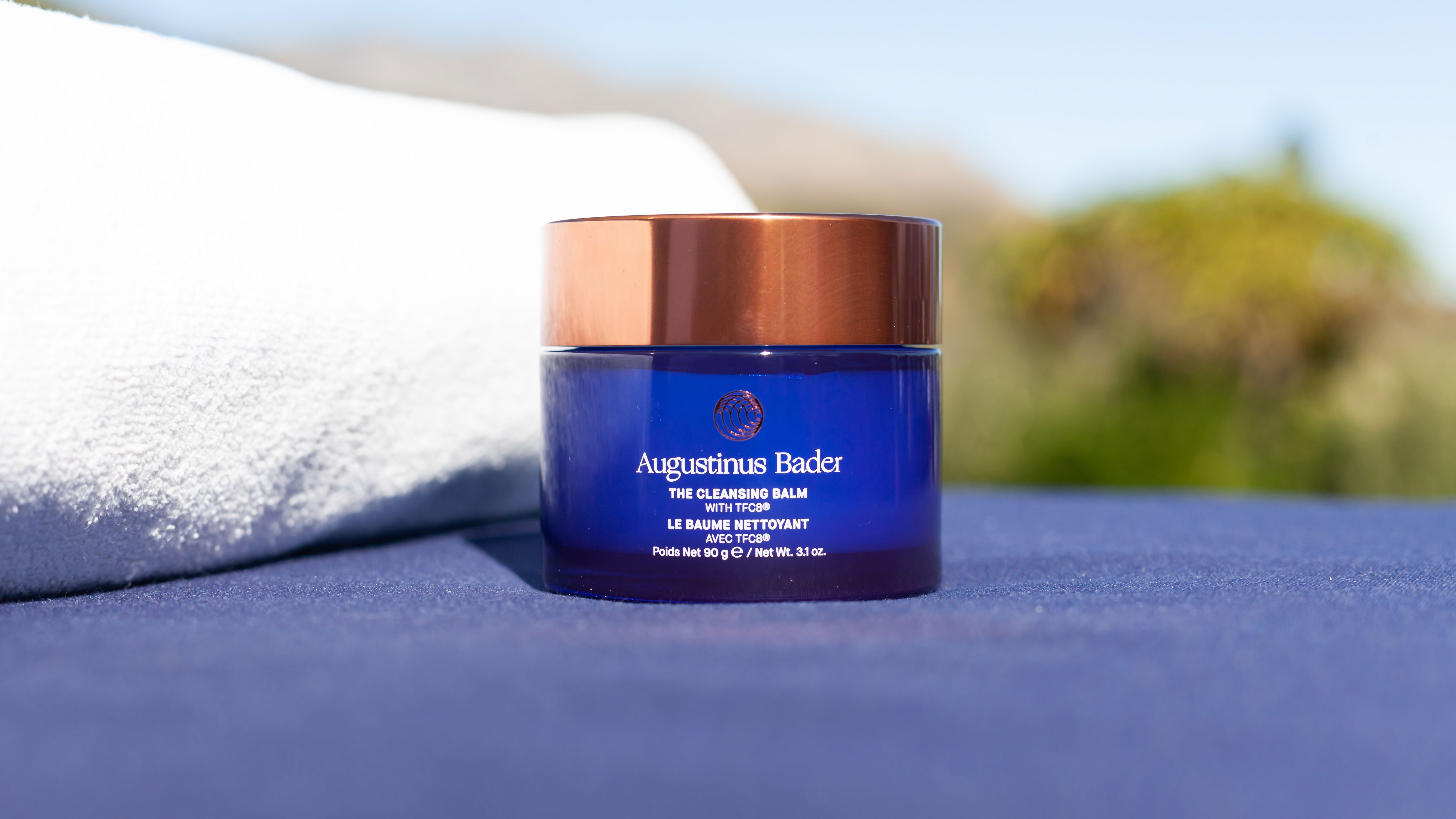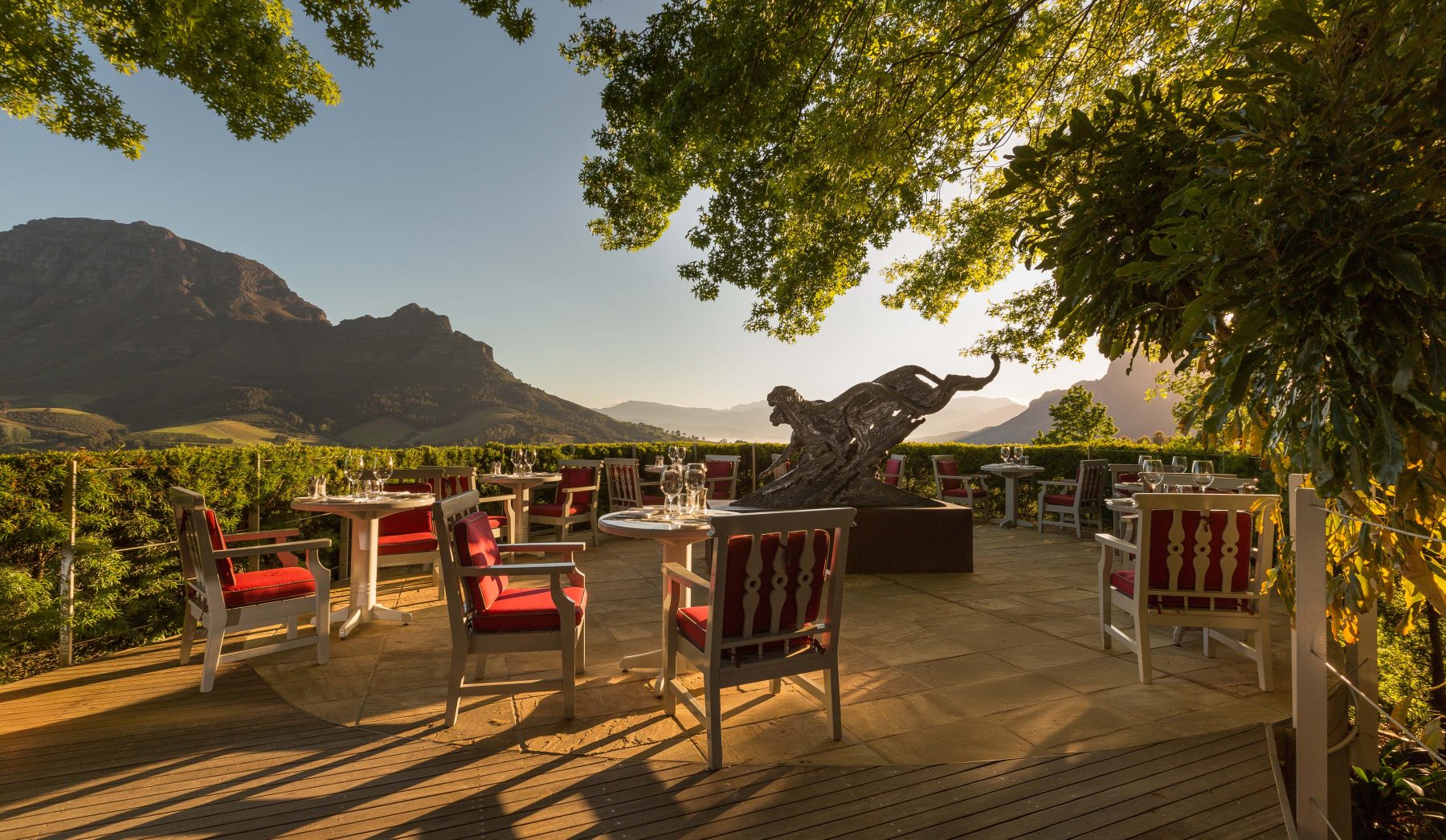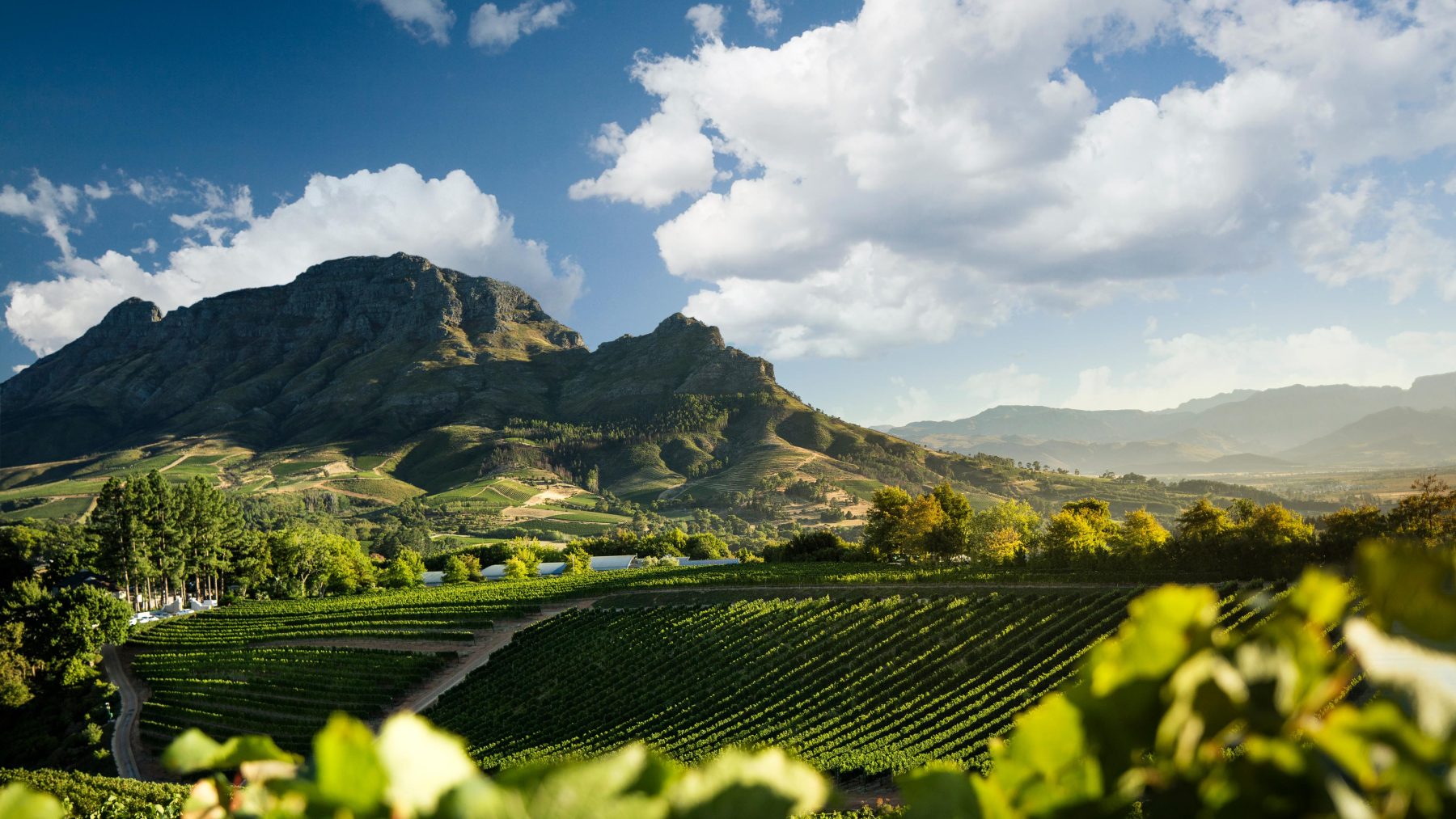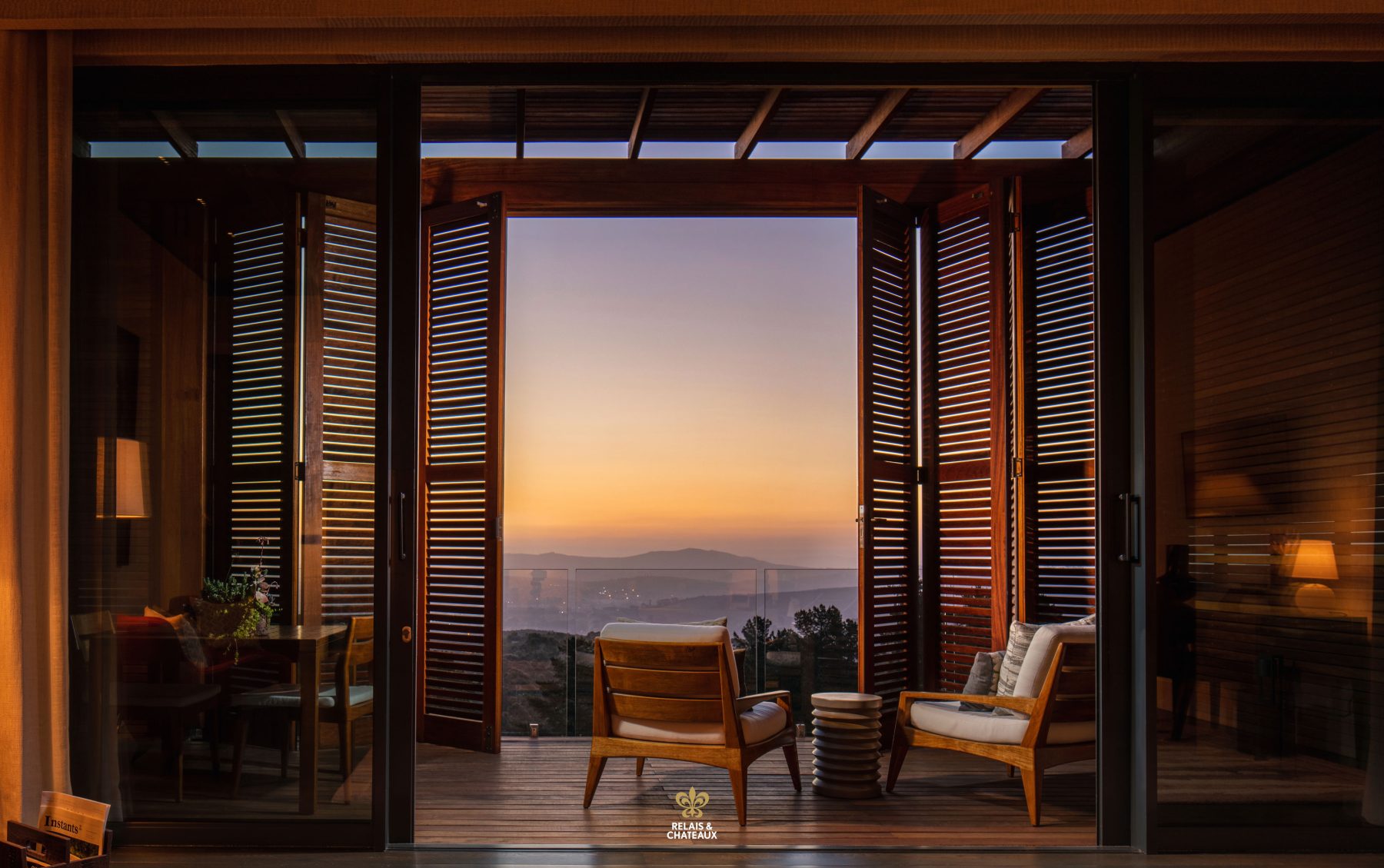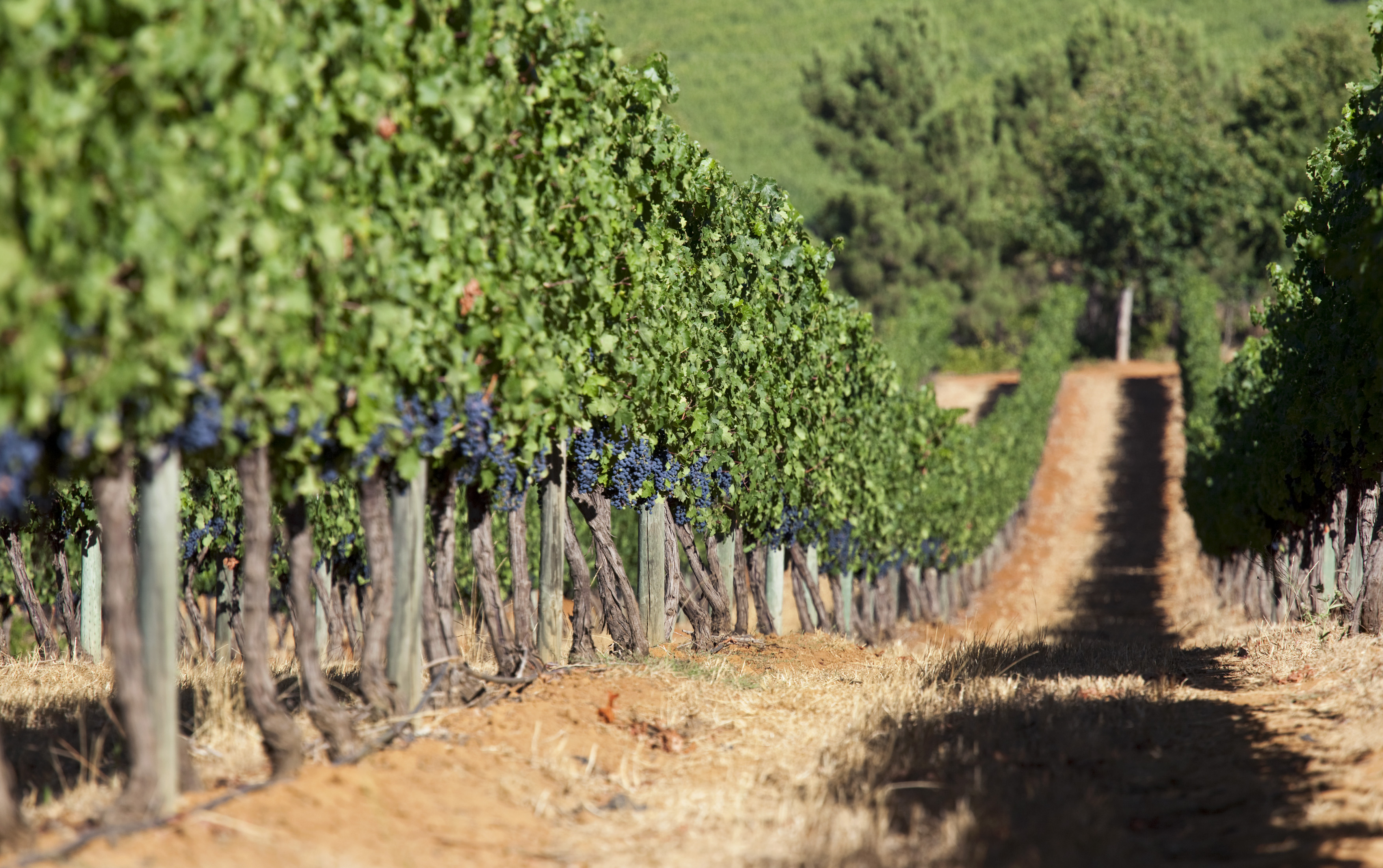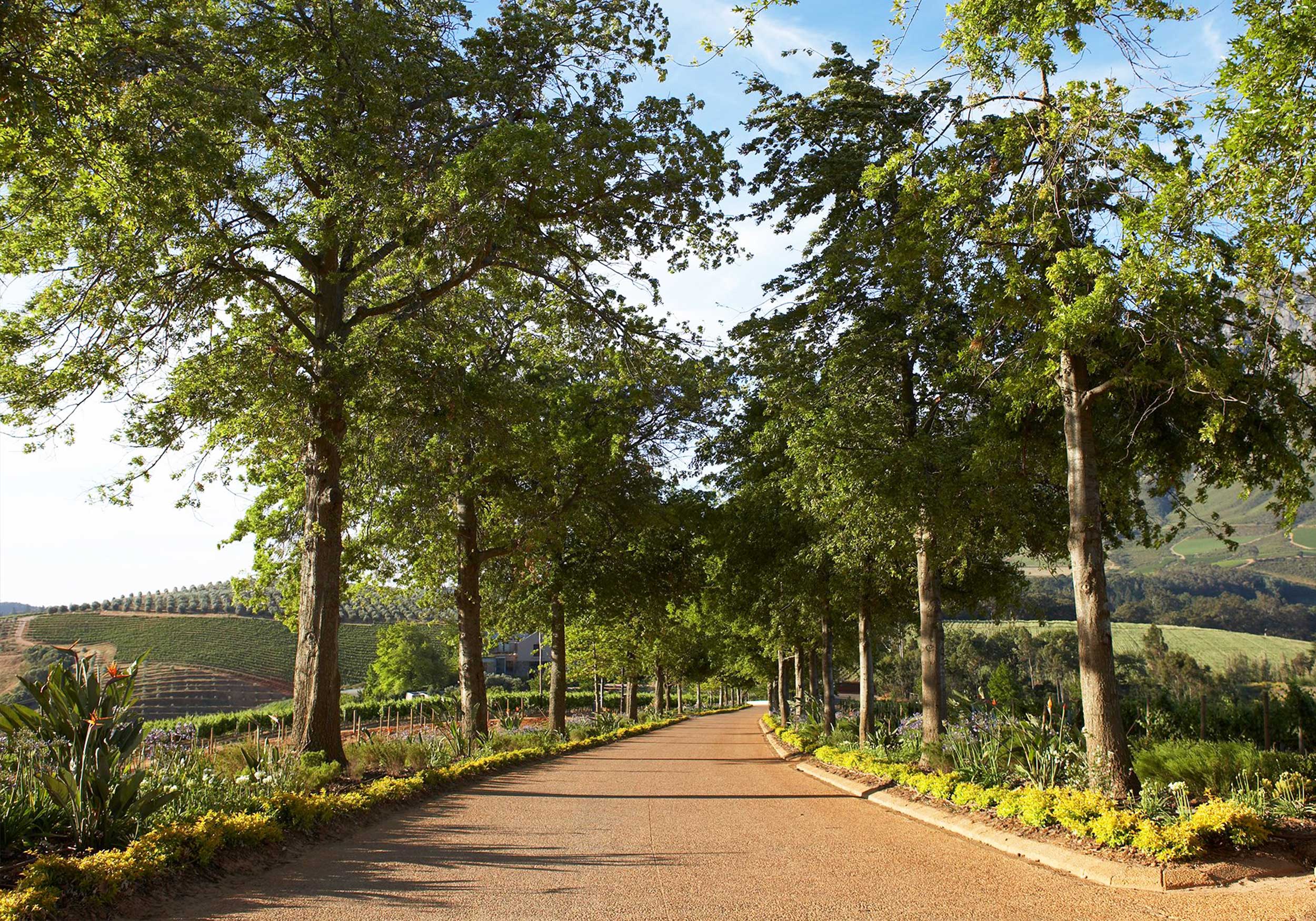Morphous
Words by: Jessica Gliddon
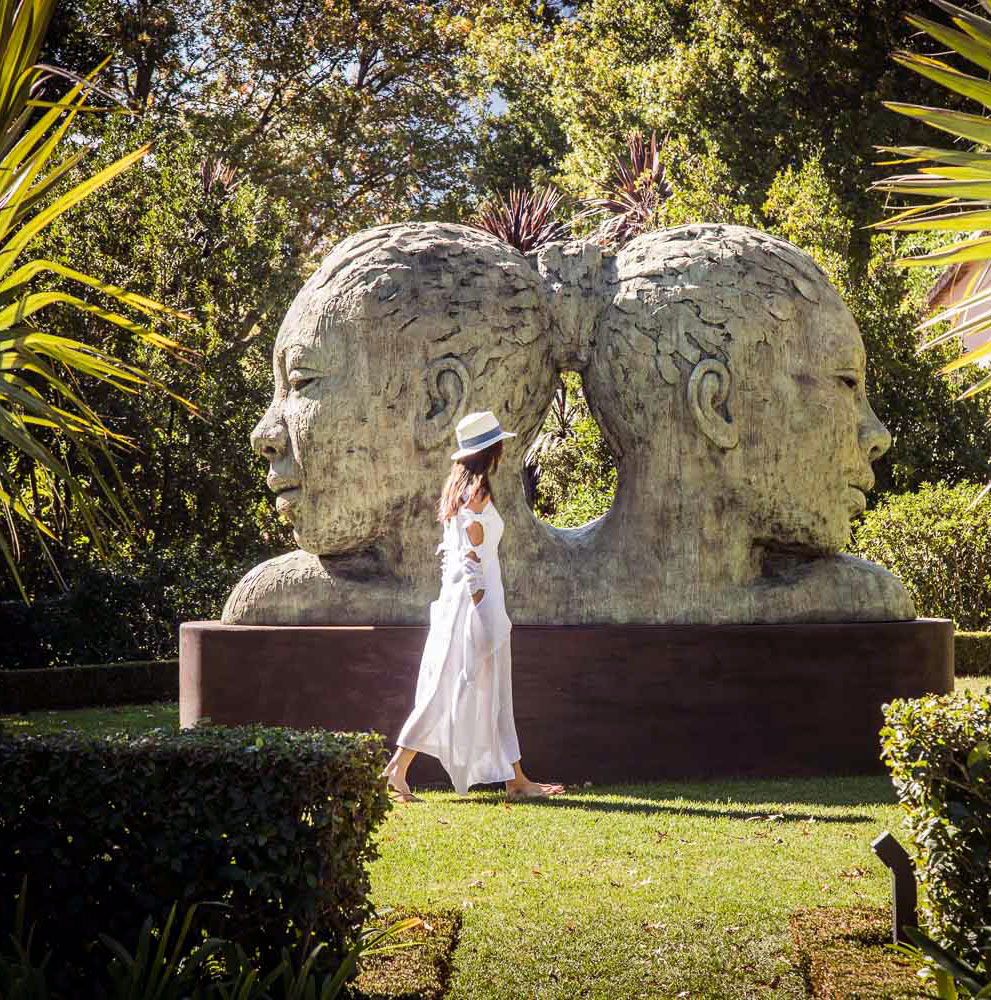
At the entrance to Delaire Graff Estate hangs a painting of Laurence Graff. Abstract strokes of red and blue paint are intermingled with his likeness. Laurence Graff has long been a loyal supporter of South African artists such as Anton Smit and his son, Lionel. “I first came into contact with Laurence Graff through my father,” Lionel Smit says. “A conversation started about my work, and Mr Graff began buying my pieces. Ever since, I have had a close relationship with Delaire Graff Estate.”
The spacious grounds of the Delaire Graff Lodges & Spa off er a perfect canvas on which to display Smit’s latest monumental sculpture, Morphous. The dual faces look in opposite directions, watching over the grounds with quiet grace. “Delaire Graff Estate is definitely well suited to exhibit my works,” Smit enthuses. “I think it is one of the most beautiful places in the world.”
The mirrored faces invite multiple interpretations around identity and duality. “The concept of Morphous started when I was working on a series of works inspired by the Rorschach inkblot,” Smit explains. “I wanted these double-painted images to be translated into sculpture, but once I did this it referenced other things like the mythological Roman Janus head, introducing the idea of one head looking into the future and the other into the past. This connected well with my recurring Cape Malay model, since my work also revolves around the idea of identity; how we have changed and morphed into different cultural identities. This work could be asking the question: where do we come from and where are we going?”
“Most of the works are inspired by actual people, but I use them as a reference, and that becomes the idea of someone. The surface itself is part of an ongoing language that I am trying to achieve in my sculpture, to mimic the idea of paint into the bronze, and treating it like the canvas.”
– LIONEL SMIT
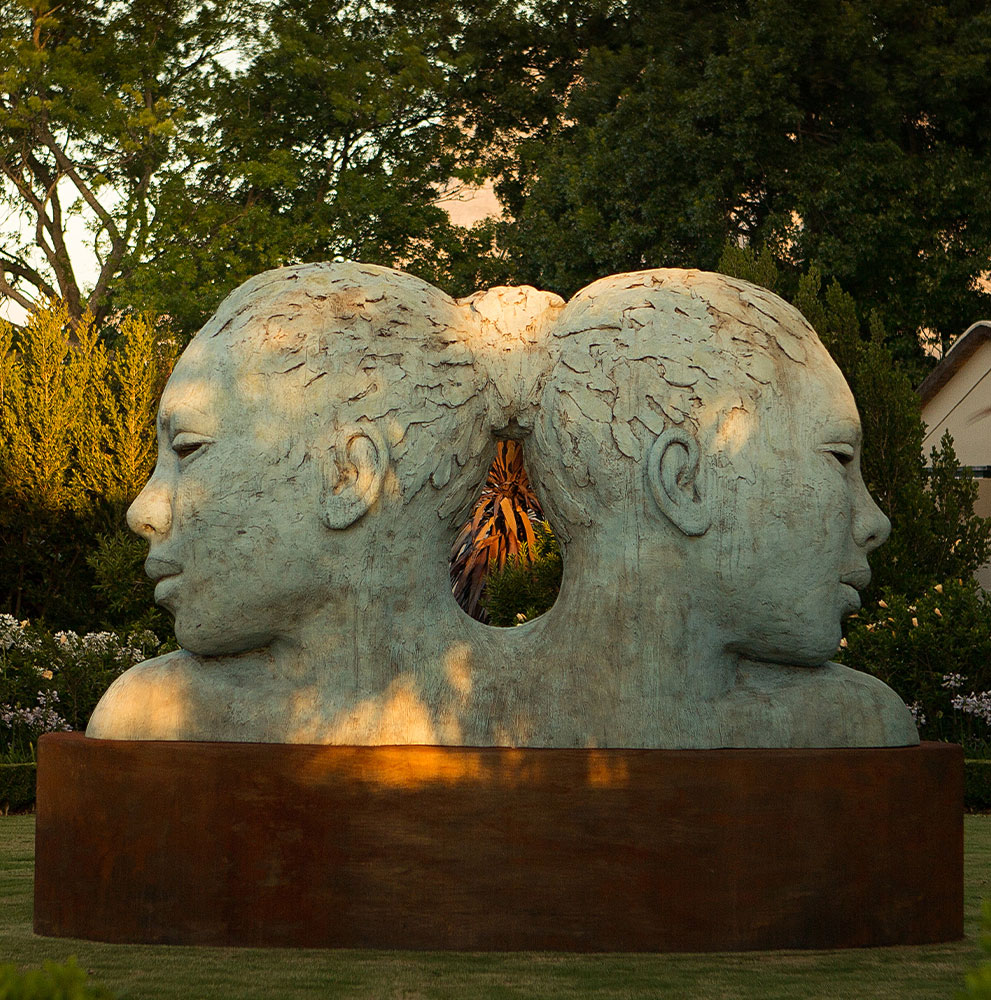
Although the artist’s subjects are mostly Cape Malay women, their expressive realisations reflect a universal aesthetic. Morphous is dripped with blue patina, allowing the sculpture to appear as though it were forged from the substance, offering a complex exploration of intersecting art forms. The grand scale of Morphous is akin to most of the artist’s works, lending them an air that inspires reverence. “I love working big, with the way you have space to move across a canvas or sculpture,” he explains. “It also translates the relationship between the abstract and the figurative very well. There is always a push and pull between them.”
The strong bands of colour that merge with his portraiture interrupt concrete interpretations, reflecting influences of the American action painters, but his works defy classification. “I always struggle to define my style, but all I can say is that it has been inspired by everything I love,” Smit says. “And I love almost all types of art. I think I bring all of this together subconsciously.” Morphous might just be his greatest realisation of this amalgamation yet.
